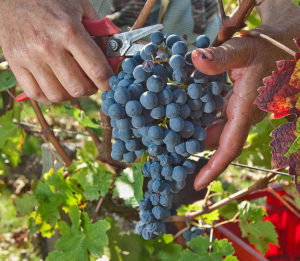
The beginning of a new year gives us the opportunity to set personal goals and reflect on where we’ve been and where we’re going. That 2020 is also the beginning of a new decade allows us to extend our reflections.
Since we began writing this column more than 30 years ago, a lot has changed in the wine industry. The wines got better, for one, and especially from countries where quality wine isn’t expected. Much of is due to climate change that has provided better growing conditions to places like Great Britain and China. Adversely, global warming has brought challenges to other regions, such as Bordeaux, Champagne, and even Napa Valley. Five new grape varieties more tolerant of the heat were approved for part of Bordeaux.
Here are some other changes we have recently seen that will be interesting to watch over the next decade:
- Organic farming

Organic farming has picked up a lot of steam in the past decade as more growers are finding it better for the environment, cheaper and better for the wine. Not only are fewer pesticides, herbicides and chemical fertilizer being used in the vineyards, but wine is being made with fewer additives, such as sulfite, as well.
But winemakers still have not made this simple for consumers to understand the difference between organic, biodynamic, sustainable and natural. It’s a bunch of doublespeak.
Organic is the only term defined by the government. “Organically grown grapes” means no synthetic material – pesticide, herbicide, chemical fertilizer – were applied in the vineyard. “Organic wines” mean the product comes from organically grown grapes and no additional sulfites were added.
Let’s hope the wine industry establishes clarity to this convergence of terms.
- Blends

Over the past decade there has been a growing trend toward untraditional blends. Bordeaux is a historically and legally defined blend of five grape varieties. Champagne is made from three principal grape varieties. Italy and France are awash in government regulations that require winemakers to use only certain grapes. But winemakers from many regions have thumbed their noses at the government and introduced unapproved grape varieties. Parts of Italy, for instance, have introduced noble grape varieties, such as cabernet sauvignon, to their wines. In California, it is common to find zinfandel with cabernet sauvignon and syrah. Expect this to continue.
- Land-free winemakers

The image of the little Italian family picking grapes from their vineyards and spending holidays crushing grapes with their feet is but a memory. We expect to see more wine from producers who own no property.
And while we’re on this subject, expect to see fewer family owned wineries. Slowly, large corporations such as Constellation, Trincheo, Gallo and Kendall-Jackson are picking off the family operations one by one. Unfortunately, the loss of family owned wineries often leads to more generic wine as the public-held corporations focus on profits.
- Wine consumption

In the past decade, baby boomers commanded the wine scene. But in 2021, Gen Xers will eclipse boomers as the largest fine-wine consuming cohort. Like millennials, they are more adventurous and less likely to embrace tradition. Favoritism in the next decade could easily shift from traditional wines, such as Bordeaux, to less traditional blends and regions, such as Croatia, Sicily, and even China.
- Prices

More immediate is the threat of more tariffs on wine. Some tariffs were applied at the end of 2019, but the Trump administration is threatening much higher and expanded tariffs as we start 2020. We have no idea if this is just a threat, but higher tariffs will mean more expensive European wine. Consumers could easily shift to New Zealand, Australian, Croatia and other unaffected wine regions.
If you want more information or if you wish to protest the proposed tariffs, check out https://www.vintus.com/2019/12/20/2020-not-1920/.
Wine picks
-
Stags’ Leap Winery “The Investor” Red Wine 2016 Stags’ Leap Winery “The Investor” Red Wine 2016 ($60). This is a blend of 40 percent merlot, 30 percent petite sirah, 20 percent cabernet sauvignon and 10 percent malbec. The serious tannins give it longevity but the rich texture makes it enjoyable now. Luscious blueberry and raspberry flavors with layers of spice, pepper and mint.
- Decoy Sonoma County Chardonnay 2018 ($20). The makers of Duckhorn wines put the same amount of care into its value-driven Decoy wines as they do its premium wines for three times the cost. This chardonnay, like the Decoy cabernet sauvignon, has young, fresh fruit character and balance. Apple and stone fruit flavors dominate the palate with a hint of cinnamon.
- Sebastiani Alexander Valley Cabernet Sauvignon 2016 ($40). Made entirely of cabernet sauvignon, this delicious and sturdy wine has enticing cranberry and tea aromas with ripe black cherry, blackberry flavors and a hint of rosemary. The fruit forward character makes it approachable without any additional aging.
- Inman Russian River Valley Chardonnay 2016 ($45). Pear and almond aromas give way to a broad spectrum of apples, citrus, mineral flavors. It is a wonderfully textured wine with fresh acidity.













